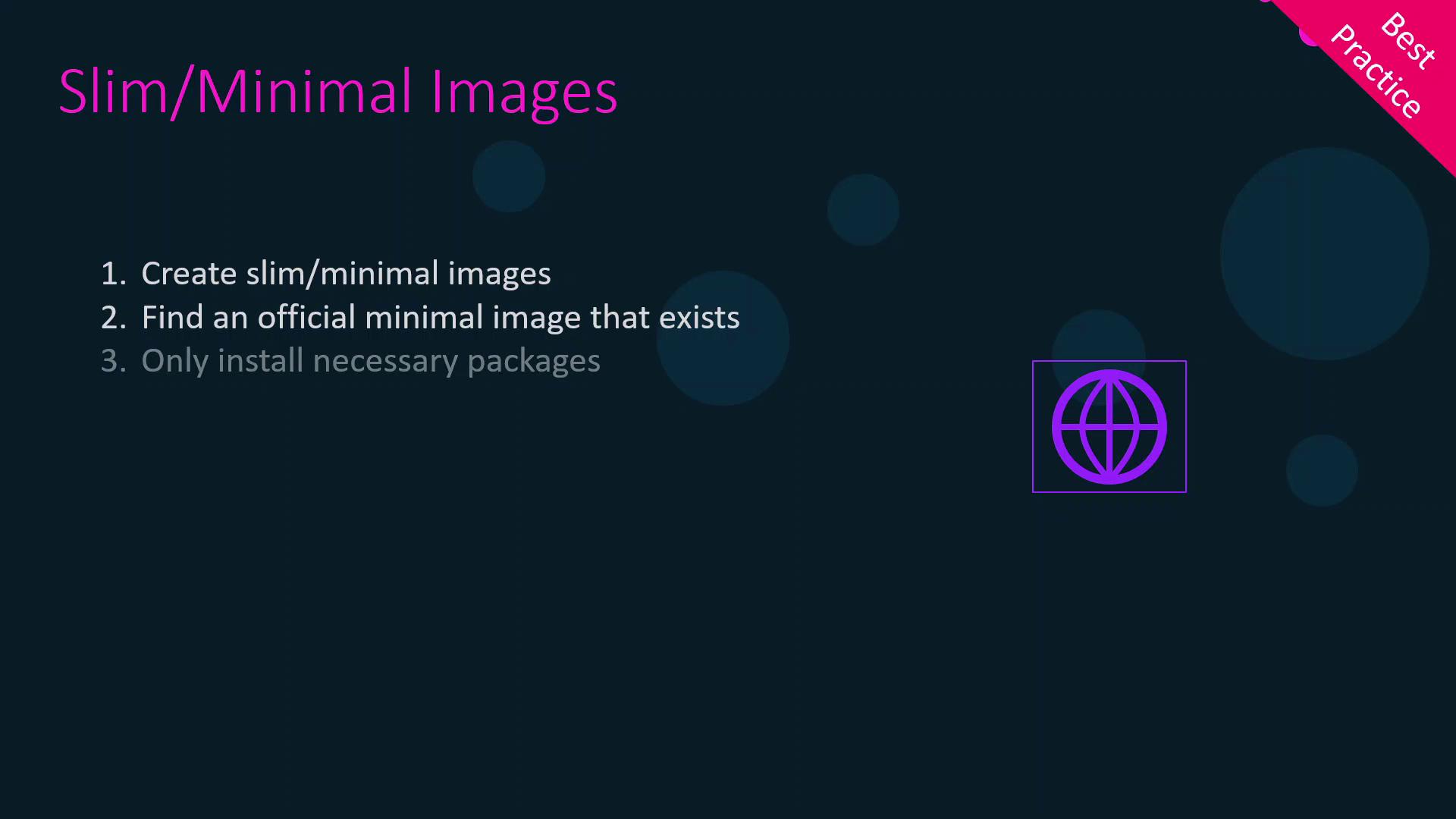Docker Certified Associate Exam Course
Docker Image Management
Dockerfile Best Practices
Containerizing applications effectively requires more than just writing a Dockerfile. In this guide, we’ll highlight common pitfalls to avoid and share best practices for building efficient, secure, and maintainable Docker images.
1. Build Modular Images
Avoid combining multiple services (e.g., web servers, databases, and supporting tools) into a single image. Instead, adopt a modular approach:
- Dedicated images per component
- Web server
- Database
- Supporting services
- Independent scaling
- Clear dependency management
When deployed together, these containers communicate over the network, forming a cohesive application without unnecessary coupling.
2. Keep Containers Stateless
Containers are ephemeral by design. Any data written to the container’s filesystem is lost when it’s removed or recreated.
Note
Use volumes or external storage to persist data across container restarts.
| Strategy | Description | Example |
|---|---|---|
| Host Volume | Mount a host directory into the container | docker run -v /host/data:/app/data |
| Docker Named Volume | Use Docker-managed volumes for portability | docker volume create app-data |
| External Service | Offload state to services like Redis or S3 | Redis, Amazon S3 |
3. Minimize Image Size
Smaller images pull faster and consume fewer resources. Follow these tips to trim your Docker images:
- Choose a minimal base image (e.g., Alpine)
- Install only runtime dependencies
- Clean package manager caches (
apk cache clean,rm -rf /var/cache/*) - Exclude development tools from production stages

4. Use Multi-Stage Builds
Multi-stage builds let you separate build-time dependencies from your final runtime image. This ensures only the necessary artifacts ship in production.
# Builder stage
FROM golang:1.19-alpine AS builder
WORKDIR /app
COPY . .
RUN go build -o myapp
# Final stage
FROM alpine:latest
COPY --from=builder /app/myapp /usr/local/bin/myapp
ENTRYPOINT ["myapp"]
Note
You can name and reuse stages to optimize builds and caching.
5. Optimize Your Build Context with .dockerignore
Every file in your build context is sent to the Docker daemon. Exclude unnecessary files to speed up builds and reduce image bloat.
# .dockerignore
node_modules
.git
.DS_Store
tests
Warning
Forgetting to exclude large directories (e.g., .git or node_modules) can dramatically increase build time and image size.
Links and References
Watch Video
Watch video content